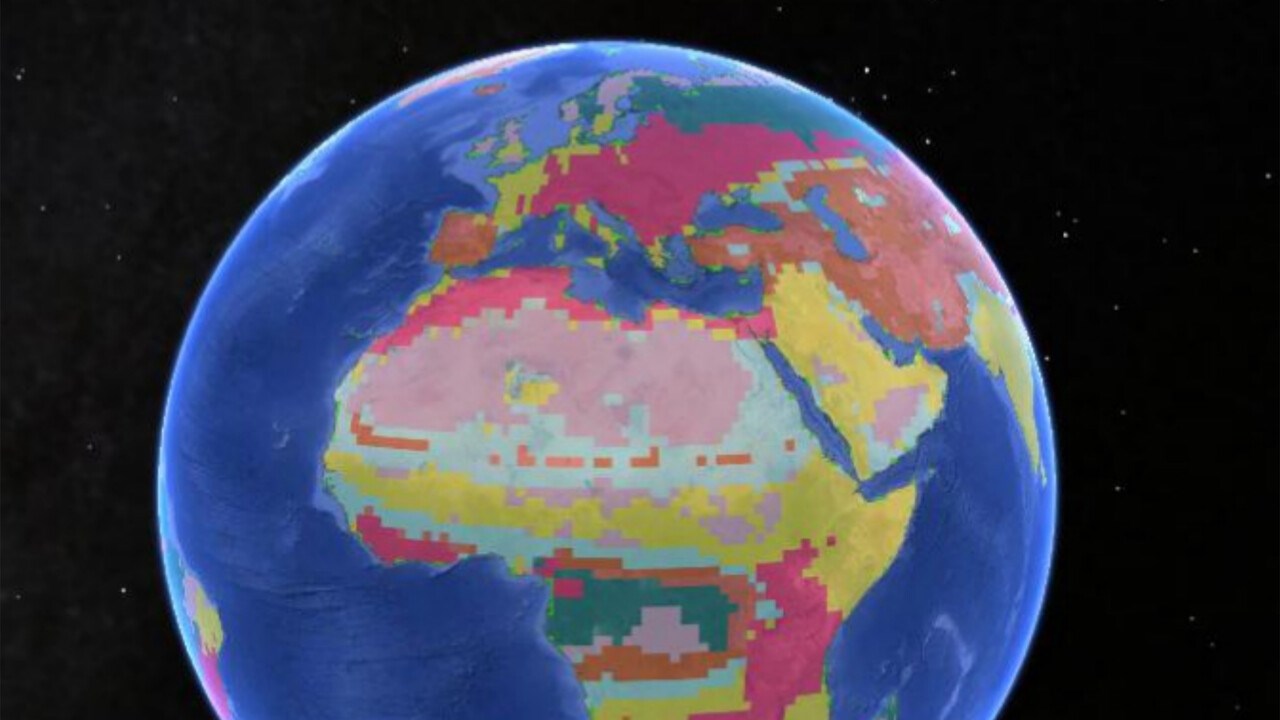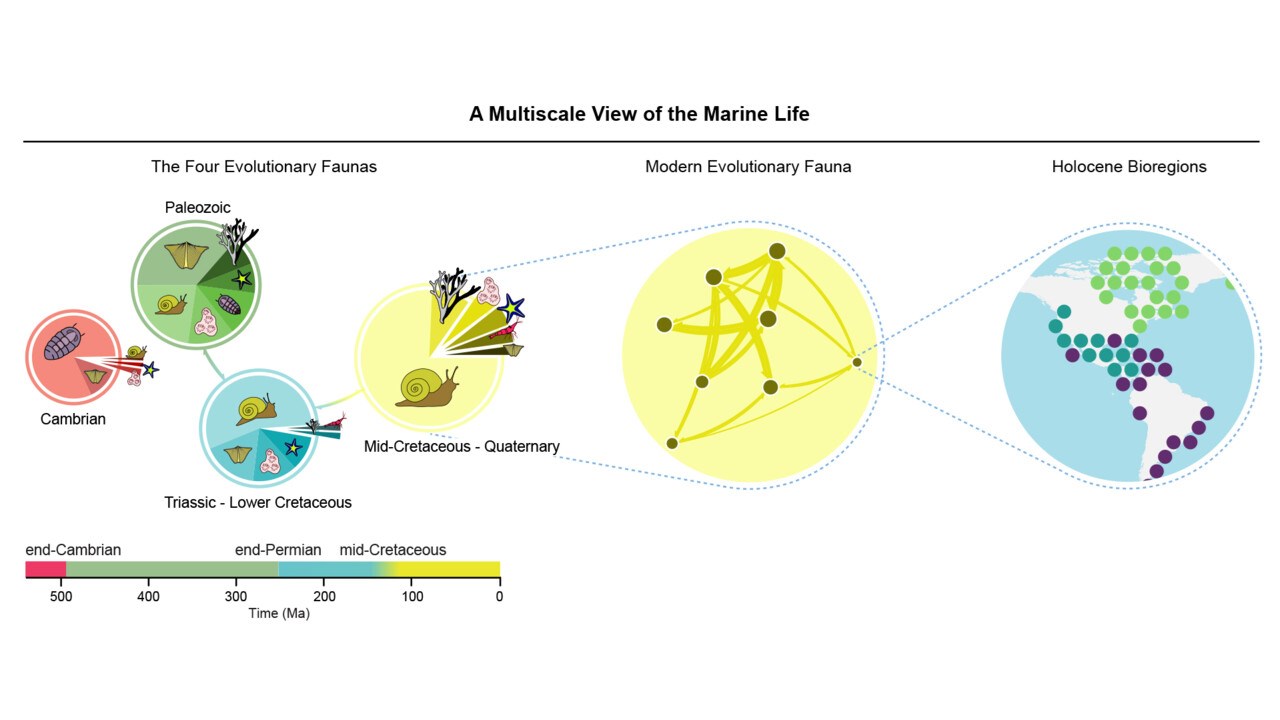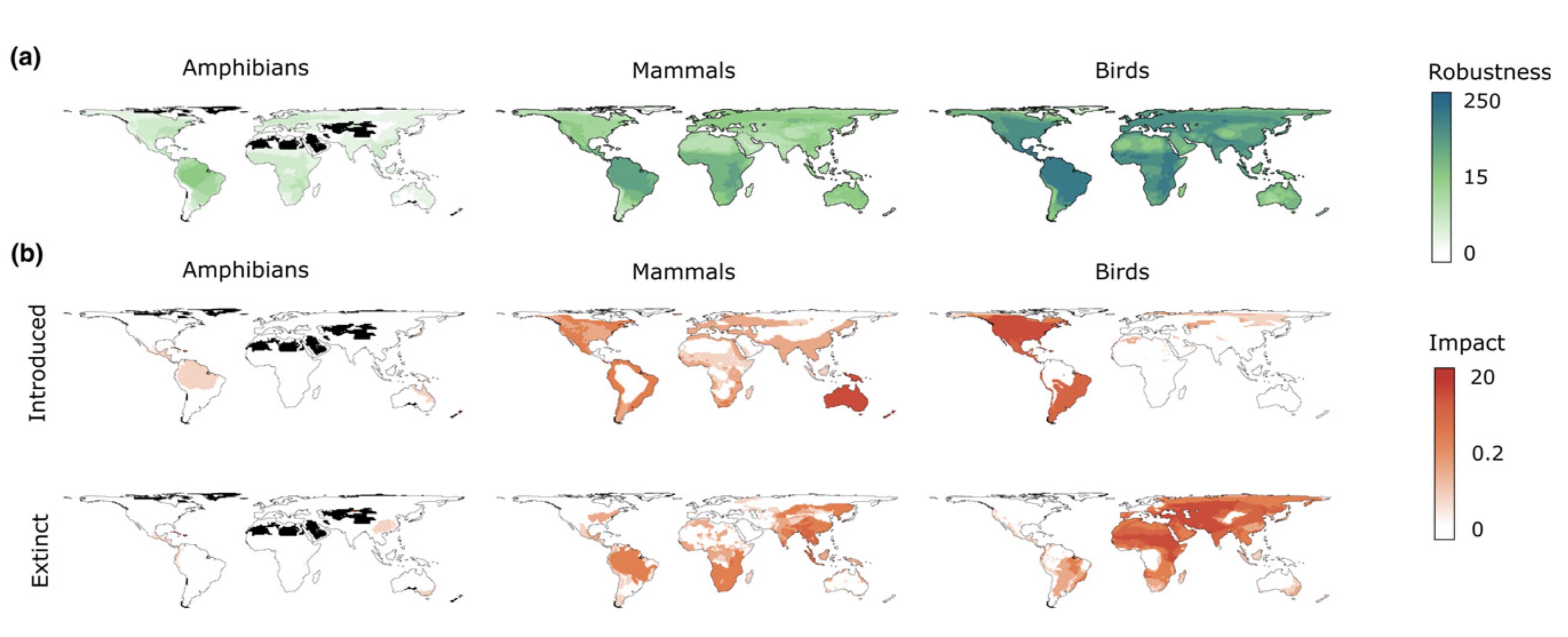Publications

Regularities in species niches reveal the world’s climatic regions
The hypothesis of the Great Evolutionary Faunas is a foundational concept of macroevolutionary research postulating that three global mega-assemblages have dominated Phanerozoic oceans...

A multiscale view of the Phanerozoic fossil record reveals the three major biotic transitions
The hypothesis of the Great Evolutionary Faunas is a foundational concept of macroevolutionary research postulating that three global mega-assemblages have dominated Phanerozoic oceans...

Human activity is altering the world’s zoogeographical regions
Zoogeographical regions, or zooregions, are areas of the Earth defined by species pools that reflect ecological, historical and evolutionary processes acting over millions of years...

Understanding Complex Systems: From Networks to Optimal Higher-Order Models
Rich data are revealing that complex dependencies between the nodes of a network may not be captured by models based on pairwise interactions. Higher-order network models go beyond these limitations, offering new perspectives for understanding complex systems.

Mapping change in large networks
Change is a fundamental ingredient of interaction patterns in biology, technology, the economy, and science itself: Interactions within and between organisms change; transportation patterns by air, land, and sea all change; the global financial flow changes; and the frontiers of scientific research change…

Maps of random walks on complex networks reveal community structure
To comprehend the multipartite organization of large-scale biological and social systems, we introduce a new information-theoretic approach to reveal community structure in weighted and directed networks…
